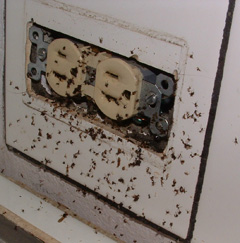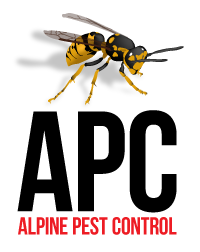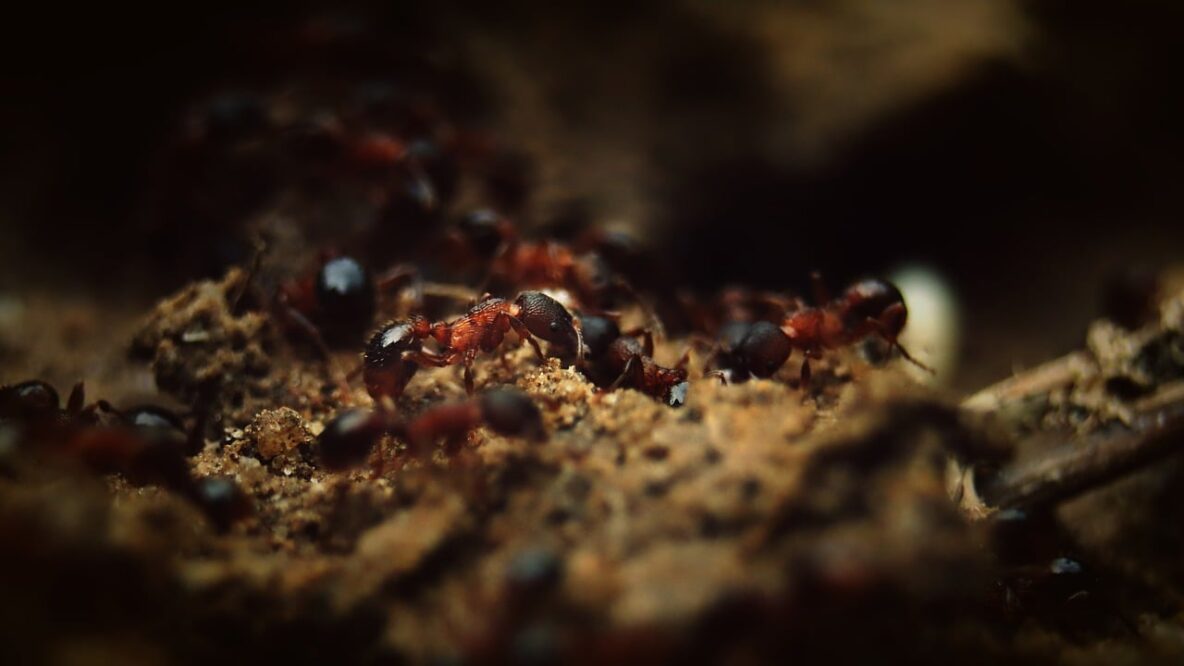Unwelcome Guests? Discover Why Ants Invade, How to Protect Your Home, and When to Call in the Experts.
Ants may be tiny, but their impact on your home can be anything but small. Whether it’s a trail of foragers in your kitchen or carpenter ants tunnelling into your walls, these industrious insects can quickly turn from fascinating to frustrating. With over 100 species of ants in Canada alone, infestations are a common challenge for homeowners. While DIY remedies may offer quick fixes, they rarely address the root cause: the colony itself. That’s where professional pest control comes in. Armed with expertise and advanced tools, professionals can eliminate infestations at the source, protecting your home, health, and peace of mind. Let’s explore why ant problems occur, how to manage them effectively, and how professional pest control plays a critical role in keeping your home pest-free.

Is Your Kitchen Becoming a Picnic Ground for Ants?
Have you noticed ants diligently marching across your countertops or forming trails in your garden? While these industrious insects play an important role in nature, they can quickly become unwelcome intruders in your home. Ants are one of the most adaptable and abundant insect species globally, with over 100 species in Canada alone. Their adaptability, combined with their sheer numbers, makes them a common concern for homeowners.
Ants are not inherently harmful and are even beneficial to the ecosystem. They prey on pests such as fleas, bedbugs, silverfish, and clothes moths, contributing to natural pest control in gardens. However, certain species, such as carpenter ants, can damage structures, while others, like odorous house ants and pharaoh ants, can contaminate food and create sanitation concerns. Recognizing when to intervene—and when to seek professional assistance—is essential for safeguarding your home and property.
Understanding Canada’s Common Ant Species
Ants are diverse in appearance, behaviour, and impact. The species most frequently encountered in Canadian homes and lawns include:
- Carpenter Ants (Camponotus spp.): These large ants excavate wood to create their nests, potentially causing structural damage to homes. Evidence of their presence includes piles of sawdust-like material called frass.
- Little Black Ants (Monomorium minimum): Tiny scavengers commonly found indoors near sugary or greasy food sources.
- Odorous House Ants (Tapinoma sessile): These ants release a distinctive, unpleasant odor when crushed.
- Thief Ants (Solenopsis molesta): Known for raiding food storage, thief ants are often associated with contamination risks.
- Pharaoh Ants (Monomorium pharaonis): These persistent ants are notorious for their ability to spread pathogens, making them a particular concern in healthcare facilities.
- Pavement Ants (Tetramorium immigrans): Often seen constructing soil mounds along driveways, patios, and lawns.
Ants vary in colour from black and brown to red and yellow, and their size ranges from tiny (1 millimetre) to relatively large (13 millimetres). Their social organization and foraging patterns make them resilient and challenging to manage, especially indoors.
Ants vs. Termites: A Common Misidentification
It is not uncommon for homeowners to confuse carpenter ants with termites, as both can be found in wood structures. However, termites are primarily confined to specific regions in Canada, whereas carpenter ants are widespread. Key distinctions include:
- Ants: Characterized by elbowed antennae, a pinched “waist,” and two distinct wing sizes (if winged).
- Termites: Possess straight antennae, a thicker waist, and wings of equal length.
Identifying the correct pest is crucial, as misidentification can lead to ineffective treatment strategies. If you suspect carpenter ants, it is wise to act promptly, as their nesting behaviour can compromise the structural integrity of buildings.
The Importance of Professional Pest Control
While DIY ant control methods may provide temporary relief, they often fail to address the root of the problem: the colony itself. Ant colonies are highly organized and can extend deep into walls, floors, or outdoor soil. For example, worker ants often forage far from the nest, making it difficult to locate and eradicate the queen and the brood using over-the-counter solutions.
Professional pest control services are essential for the following reasons:
- Accurate Identification
Pest control professionals can accurately identify the ant species, ensuring that the treatment plan targets the specific behaviors and vulnerabilities of the pest. Misidentifying the species can lead to ineffective treatments and recurring infestations. - Comprehensive Solutions
Professionals use advanced tools and techniques, such as non-repellent baits and residual sprays, which are more effective than over-the-counter options. These treatments are designed to disrupt the colony’s lifecycle, ensuring long-term results. - Health and Safety
Certain ant species, such as pharaoh ants, can spread bacteria, posing health risks. Professionals can assess the severity of the infestation and apply treatments that minimize exposure to harmful pathogens. - Prevention of Structural Damage
In the case of carpenter ants, professional intervention can prevent extensive damage to wooden structures, saving homeowners from costly repairs. Pest control experts can identify hidden nests within walls, beams, and floors. - Long-Term Prevention
Beyond eradicating an infestation, professionals provide valuable advice on preventing future invasions. They can identify entry points, recommend structural repairs, and apply protective barriers to deter ants from returning.
Steps to Manage and Prevent Ant Infestations
Although professional intervention is often necessary, homeowners can take several proactive measures to manage and prevent ant problems:
1. Maintain Cleanliness
Ants are attracted to food and water. Keeping kitchens and dining areas clean, storing food in sealed containers, and promptly wiping up spills can discourage foraging.
2. Seal Entry Points
Inspect your home for cracks, gaps around windows and doors, and openings around utility pipes. Seal these with caulk or weather stripping to prevent ants from entering.
3. Remove Outdoor Attractants
Ants often build nests near readily available food and water. Eliminate standing water, remove rotting wood, and trim vegetation away from your home’s foundation.
4. Use Natural Remedies
Sprinkling diatomaceous earth or creating barriers with substances like vinegar, cinnamon, or citrus oils can deter ants from specific areas. These eco-friendly methods can be particularly effective for minor infestations.
5. Apply Targeted Treatments
For larger infestations, consider using ant baits that workers will carry back to the colony. However, ensure the bait is species-specific for optimal results.
Ants: Friends or Foes?
Ants are a natural part of the ecosystem, providing benefits such as pest control and soil aeration. While their presence in gardens can often be tolerated, their intrusion into homes or destruction of property necessitates intervention. Understanding their behaviours, identifying the species, and taking appropriate measures can help mitigate their impact.
For persistent or severe infestations, professional pest control services offer the expertise and tools needed to eliminate the problem at its source. By combining professional assistance with preventative measures, you can protect your home and create a safe, pest-free environment for your family.

